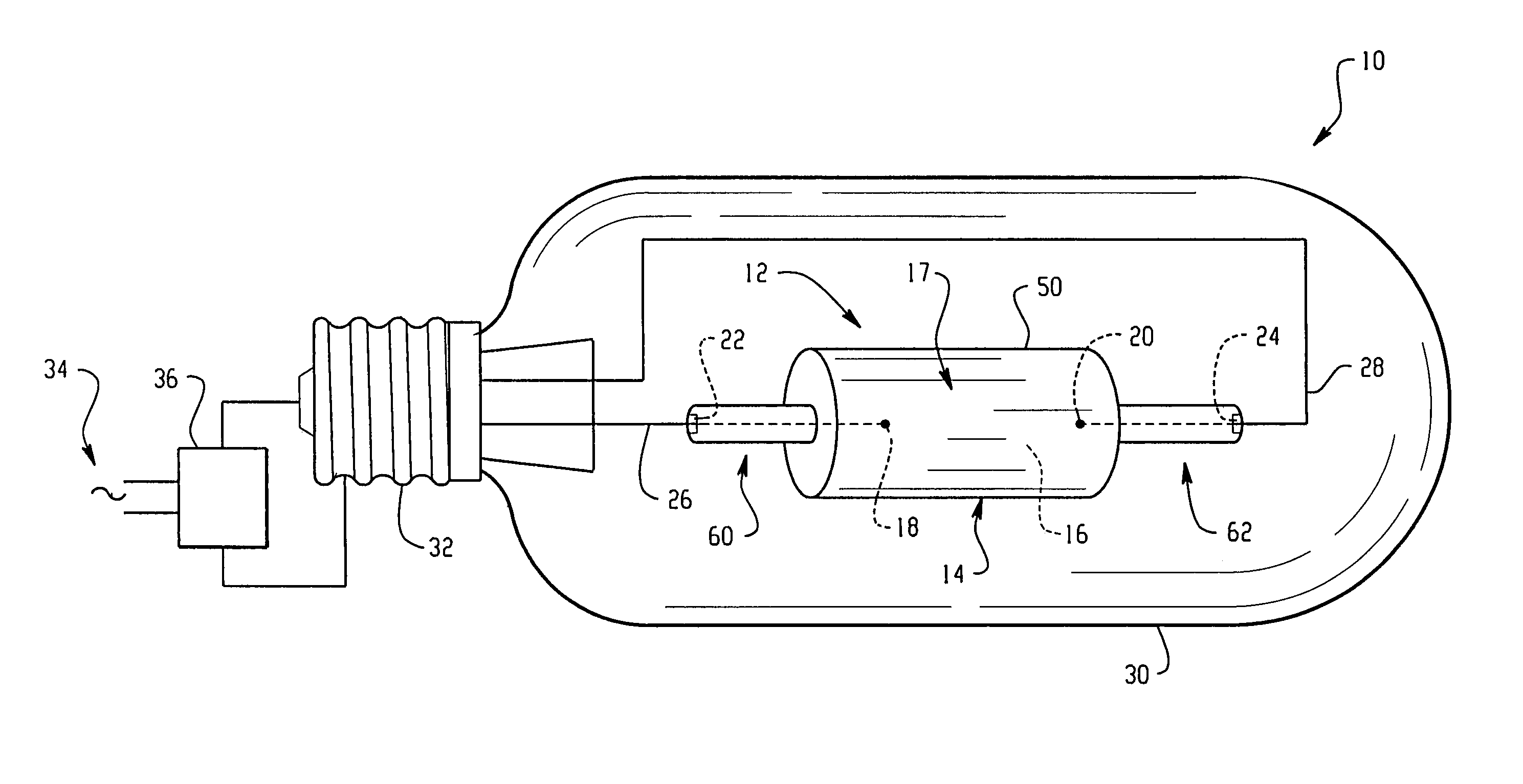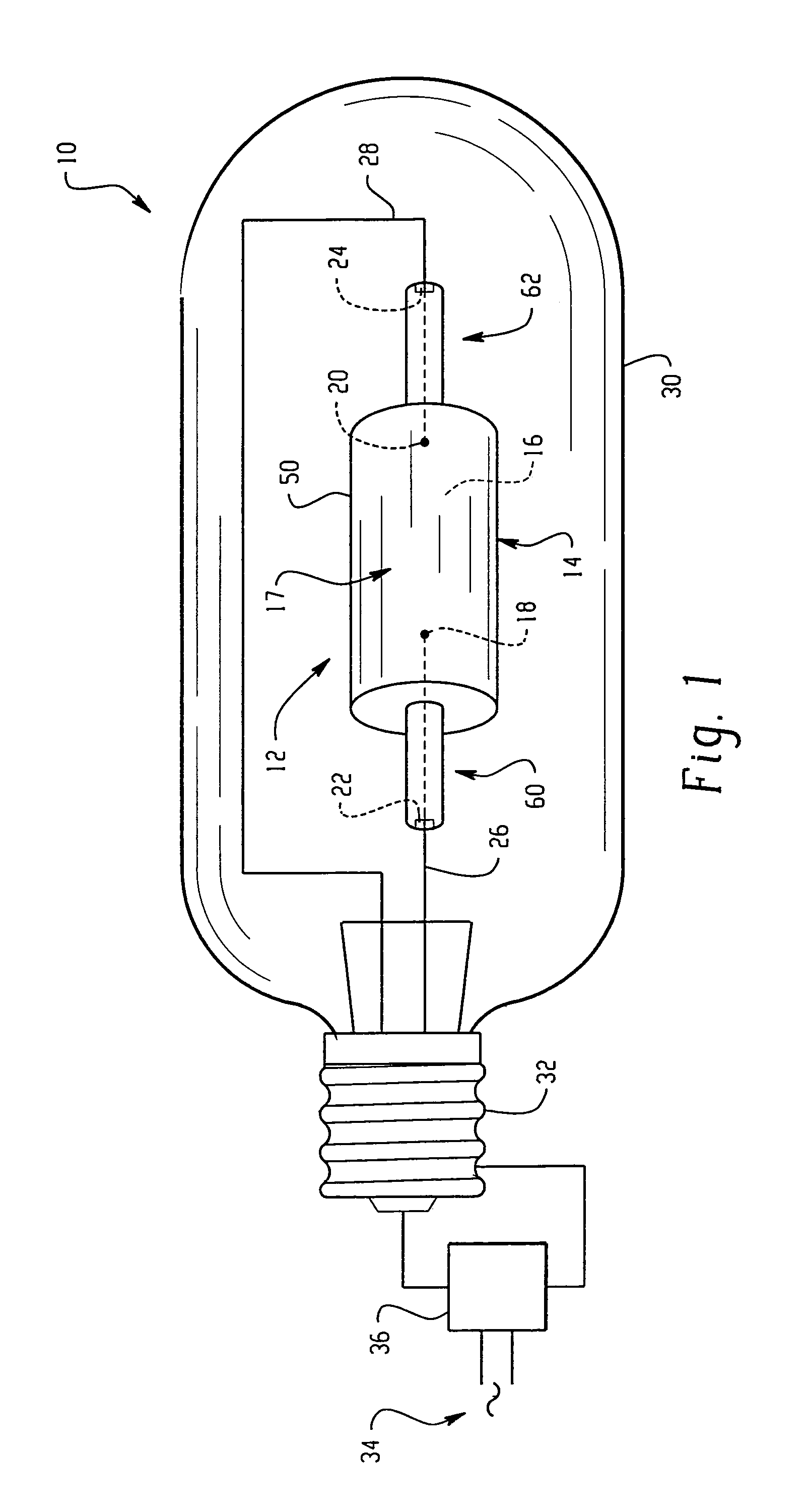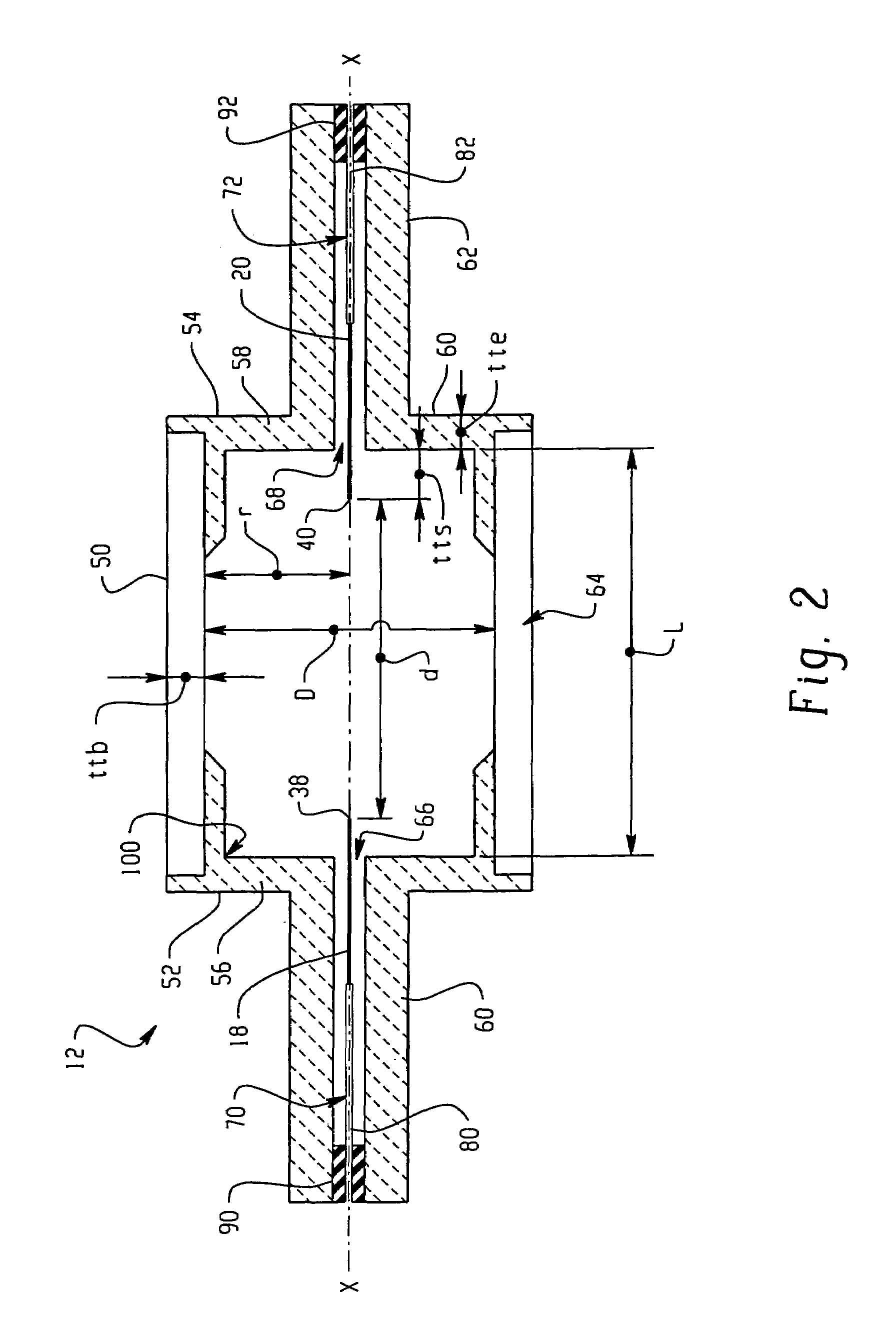Ceramic metal halide lamp
a ceramic metal halide and lamp body technology, applied in the field of electric lamps, can solve the problems of low temperature, premature failure of lamps, and particularly harmful water vapor, and achieve the effect of good color rendering and high efficiency
- Summary
- Abstract
- Description
- Claims
- Application Information
AI Technical Summary
Benefits of technology
Problems solved by technology
Method used
Image
Examples
example
[0054]Arctubes are formed according to the shape shown in FIG. 2 from three component parts. The internal diameter D is ˜5.8 mm and the internal length L is ˜7.6 mm. A fill comprising ˜5 mg halide in the weight ratios given in TABLE 1 is used for forming lamps. The metal halide arctubes are back filled with a rare gas, comprising Ar or Xe and a small addition of Kr85. The cold fill pressure is 120-300 Torr. The arctubes are assembled into lamps having an outer vacuum jacket and which are run on 70 W Electronic Ballasts. The arctube leg geometry, leadwire design, seal parameters, and outer jacket are the same for all lamps tested.
[0055]Lamps formed as described above are run in a vertical orientation (i.e., as illustrated in FIG. 3) with the lamp cap positioned uppermost at 70 W. TABLE 1 shows the results obtained after 100 hours. CCX and CCY are the chromaticity X and Y, respectively, on a standard CIE chart. The results are the mean of 10-11 lamps.
[0056]
TABLE 1AlkalineRareAlkalineE...
PUM
 Login to View More
Login to View More Abstract
Description
Claims
Application Information
 Login to View More
Login to View More - R&D
- Intellectual Property
- Life Sciences
- Materials
- Tech Scout
- Unparalleled Data Quality
- Higher Quality Content
- 60% Fewer Hallucinations
Browse by: Latest US Patents, China's latest patents, Technical Efficacy Thesaurus, Application Domain, Technology Topic, Popular Technical Reports.
© 2025 PatSnap. All rights reserved.Legal|Privacy policy|Modern Slavery Act Transparency Statement|Sitemap|About US| Contact US: help@patsnap.com



